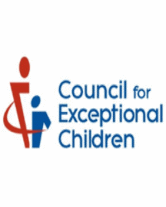Teaching Academic Language
Successful educators of English-language learners, including those with learning difficulties, understand that demonstrating language proficiency depends heavilyon contextual factors. This distinction is a critical one for classroom teachers working with English-language learners with learning difficulties.
Basic interpersonal communication skills are often calledconversational language. The formal language used in academicdialog is referred to as academic language. Basic interpersonal communication can be thought of as the language of the playground, or the language for talking to friends. It is heavily dependent on clues, on visual gestures, conversational responses, and short, partially grammatical phrases.
Moreover, it is very different from the formal language used in academic contexts such as explaining scientific concepts and articulating themes in novels. Many have found these distinctions important in understanding why students who seem to speak English fairly well in their conversations with peers still struggle with reading textbooks or sophisticated novels in English.
Increasingly, many argue that academic language development in English should be a crucial instructional objective of schooling for English-language learners, beginning in kindergarten. In fact, for English-language learners, success in school will depend on their ability to learn successfully the types of language skills involved in academic language development.
There is an emerging knowledge base on how to reach this instructional goal. One way to help develop academic language is by reinforcing verbal exchanges with written words. Having words availableto read and re-read and use as a basis of stories generated byEnglish-language learners with learning difficulties is a criticallyimportant technique.
Graphic organizers such as story maps build knowledge ofacademic language while enhancing comprehension. Readingstories in English and filling in the story maps (either individually with teacher support or working with a peer) is an effectiveway for English-language learners with learning difficulties tolearn English. The permanence of maps and other visual organizers reduces the need to memorize and gives students an opportunity to understand and reflect on the structure of the new language, as well as see the connections between concepts.
Excerpted from Teaching English-Language Learners with Learning Difficulties
More resources on Teaching English-Language Learners with Learning Difficulties








